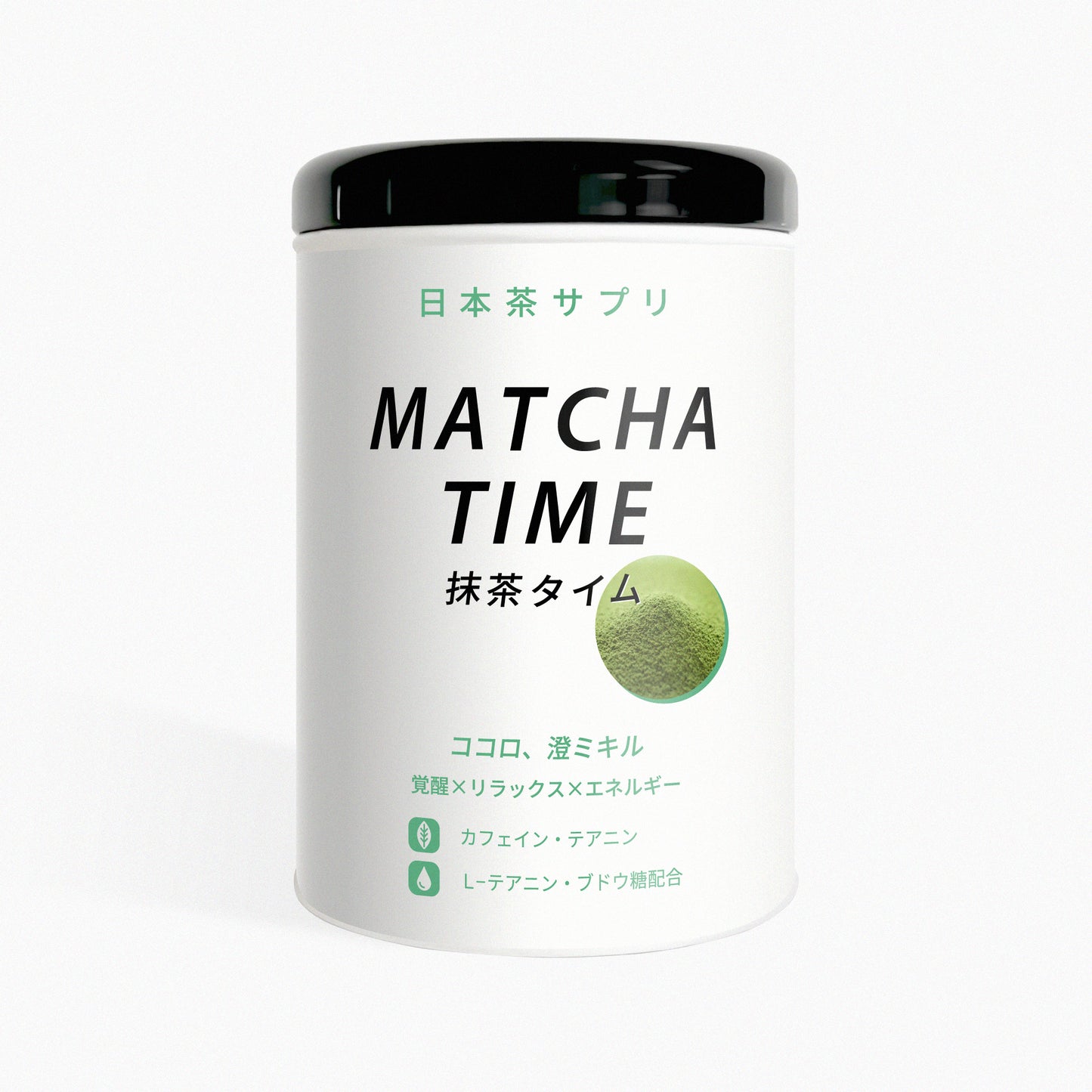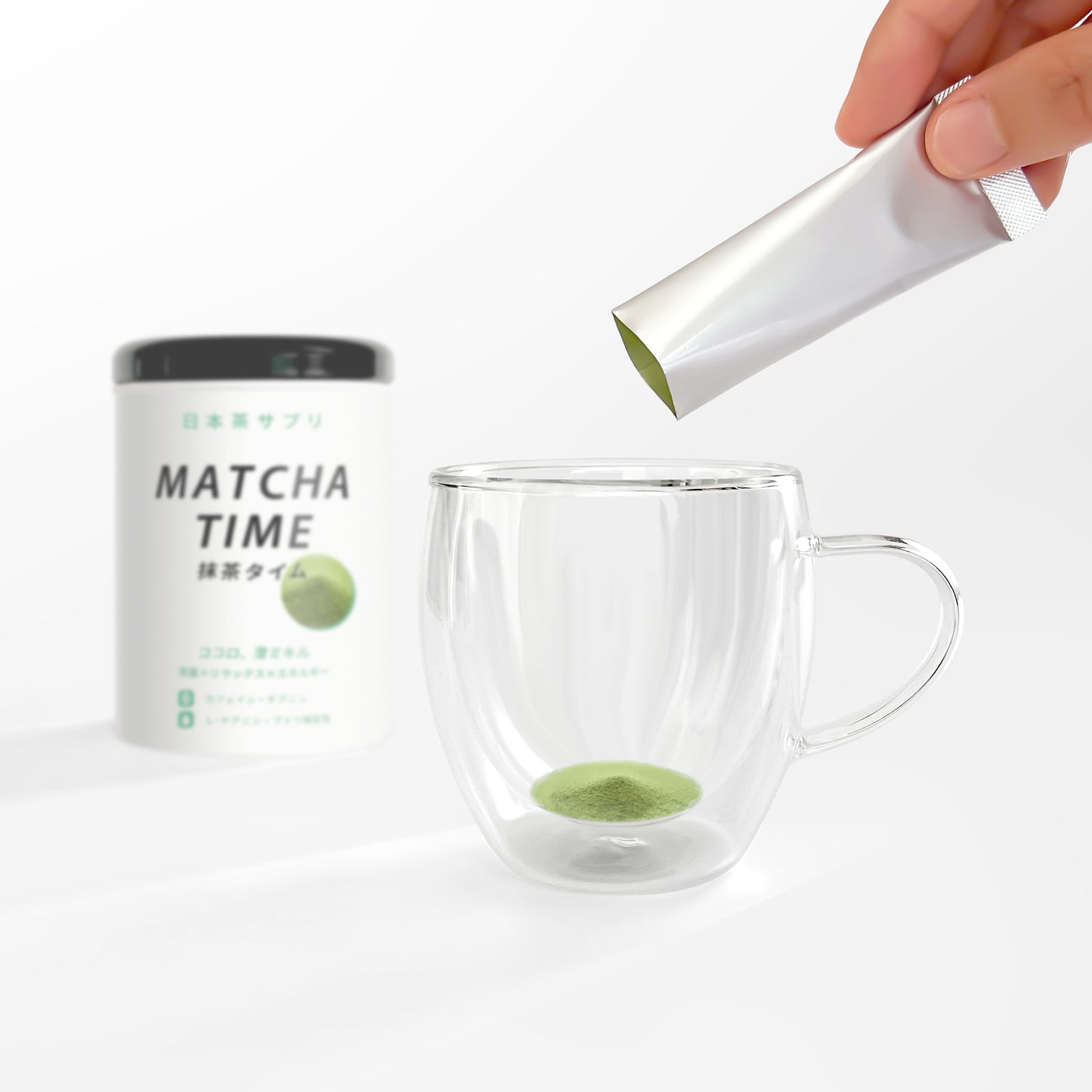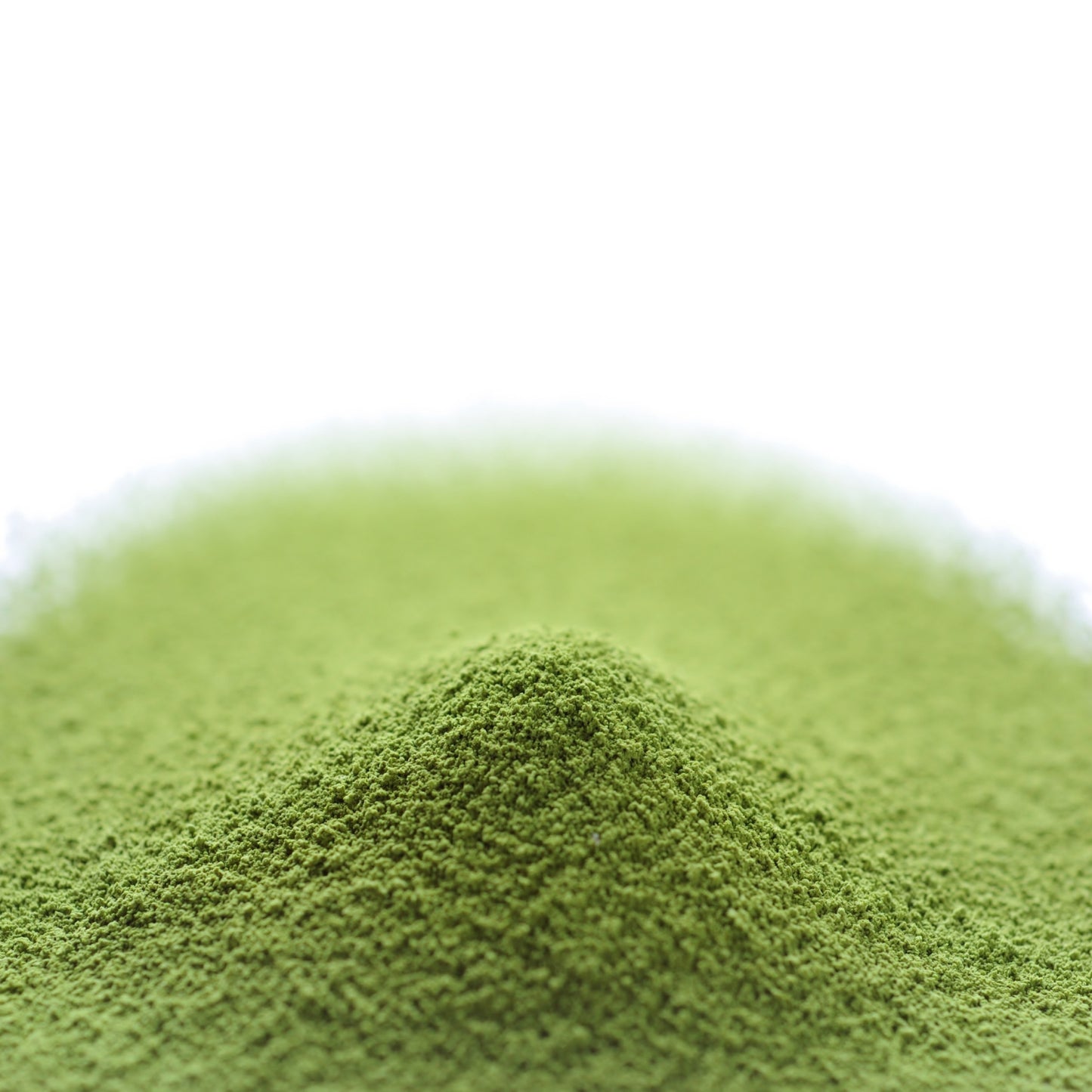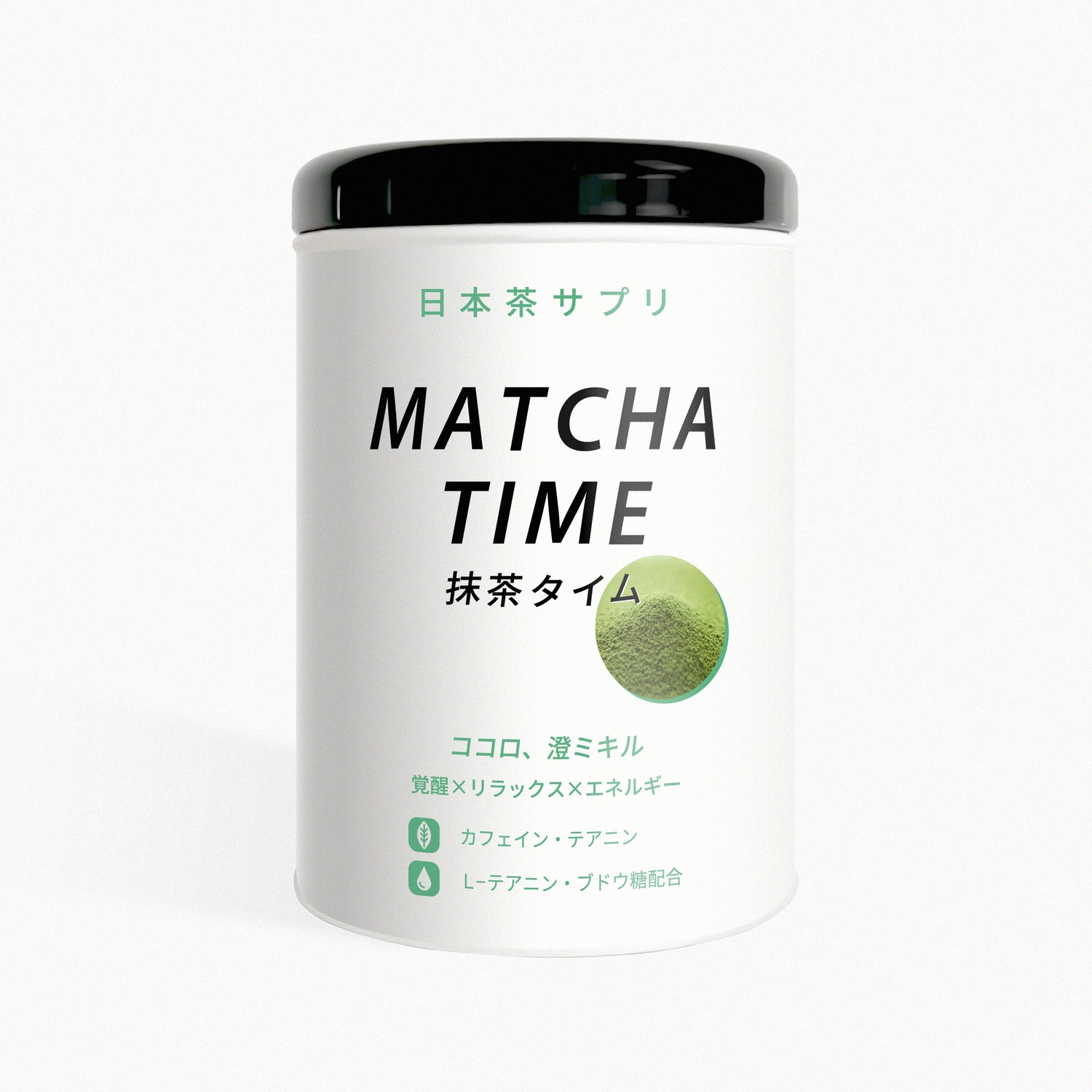Matcha

I will introduce "Matcha" used in MATCHA TIME.
According to the Japan Tea Central Association, matcha is defined as "a finely powdered green tea made by grinding tencha, which is grown in the shade and dried without being kneaded, using a stone mill."
How matcha is made
覆下茶園 -Ohishita Tea Garden-

About 20 days before harvesting the new buds, the tea plants are covered with a black sheet to block sunlight. By shading the plants, the production of astringent and bitter components caused by sunlight is prevented, and the umami components are retained in the leaves. Additionally, the chlorophyll in the leaves increases, resulting in a bright, vivid green color.
The Raw Material of Matcha: "碾茶 -Tencha-"

The harvested tea leaves are steamed, sorted, and dried to produce tencha, the raw material for matcha. The tencha is then stored in a low-temperature, dehumidified environment to age. This aging process enhances its rich aroma and smooth flavor.
Grinding with a Stone Mill

Tencha is ground using a stone mill. Matcha is sensitive to heat, and excessive heat can degrade its quality. To prevent this, tencha is carefully ground over time using a stone mill, which does not easily transmit heat, resulting in a smooth, fine powder.
The "Samidori" Variety, a Representative of Uji Tea

"Samidori" is one of the representative varieties of Uji tea. The large new buds have a light green color with a glossy sheen and a fresh appearance.
History
It was selected from his own garden by Mr. Masajiro Koyama in the early Showa period in Ogura-cho, Uji City. Subsequently, a comparative trial of the lineage was conducted at the Kyoto Prefectural Tea Industry Research Institute starting in 1942. Its superiority was recognized, and in 1954, it was adopted as a recommended tea variety in Kyoto Prefecture.
Characteristics
It is suitable for tencha, gyokuro, and sencha. This variety is highly valued, especially as tencha, for its uniform color and vibrant appearance. Additionally, it is characterized by its high yield and superior quality.
Origin of the Name
The name appears to be derived from the color of the tea leaves, "light green" (浅緑色). However, it is also said that "sa" is a prefix meaning "youthful, fresh, or related to May."
The Flavor of Matcha
It has a gentle astringency, a rich and deep umami, and a well-balanced finish.
Yamashiro Region, Kyoto Prefecture
The Yamashiro region is located in the southern part of Kyoto Prefecture and is a representative production area for Uji tea.
The Origin of Uji Tea
In the Kamakura period, the revered monk Myoe Shonin of Kozan-ji Temple in Togano received tea seeds from Zen master Eisai. He planted these seeds in Togano, initiating tea cultivation there. It is said that Myoe Shonin took seeds from the tea plants in Togano and sowed them in the Yamashiro area of Uji, specifically in the village of Ogawata in Gojo. This is considered the origin of Uji tea. Subsequently, Uji flourished as a center of tea production. In the Edo period, Nagatani Soen from Ujitawara invented the method of making sencha (green tea) in the Ao method, thus completing a unique Japanese tea production process. Over time, the quality of tea improved, and the tea produced in the Yamashiro region became known as Uji tea, gaining nationwide recognition.
A Climate Suitable for Tea Production

It is said that the greater the temperature difference between day and night, the better the aroma of the tea. The Yamashiro region has natural conditions such as climate, soil, and terrain that are well-suited for tea cultivation, allowing for tea production that leverages the characteristics of each area. The raw material for matcha, "Tencha," is mainly produced in Uji City, Joyo City, Yawata City, Ide Town, and Wazuka Town.
MATCHA TIME
Matcha Time uses matcha made from "Samidori" tea leaves cultivated in the Yamashiro region.
MATCHA TIME 3g x 15sticks
Share









※ This product is a stick-type matcha powder drink blended with matcha, raw sugar (sugarcane), glucose, and L-theanine. It is not matcha prepared with a bamboo whisk (chasen).

